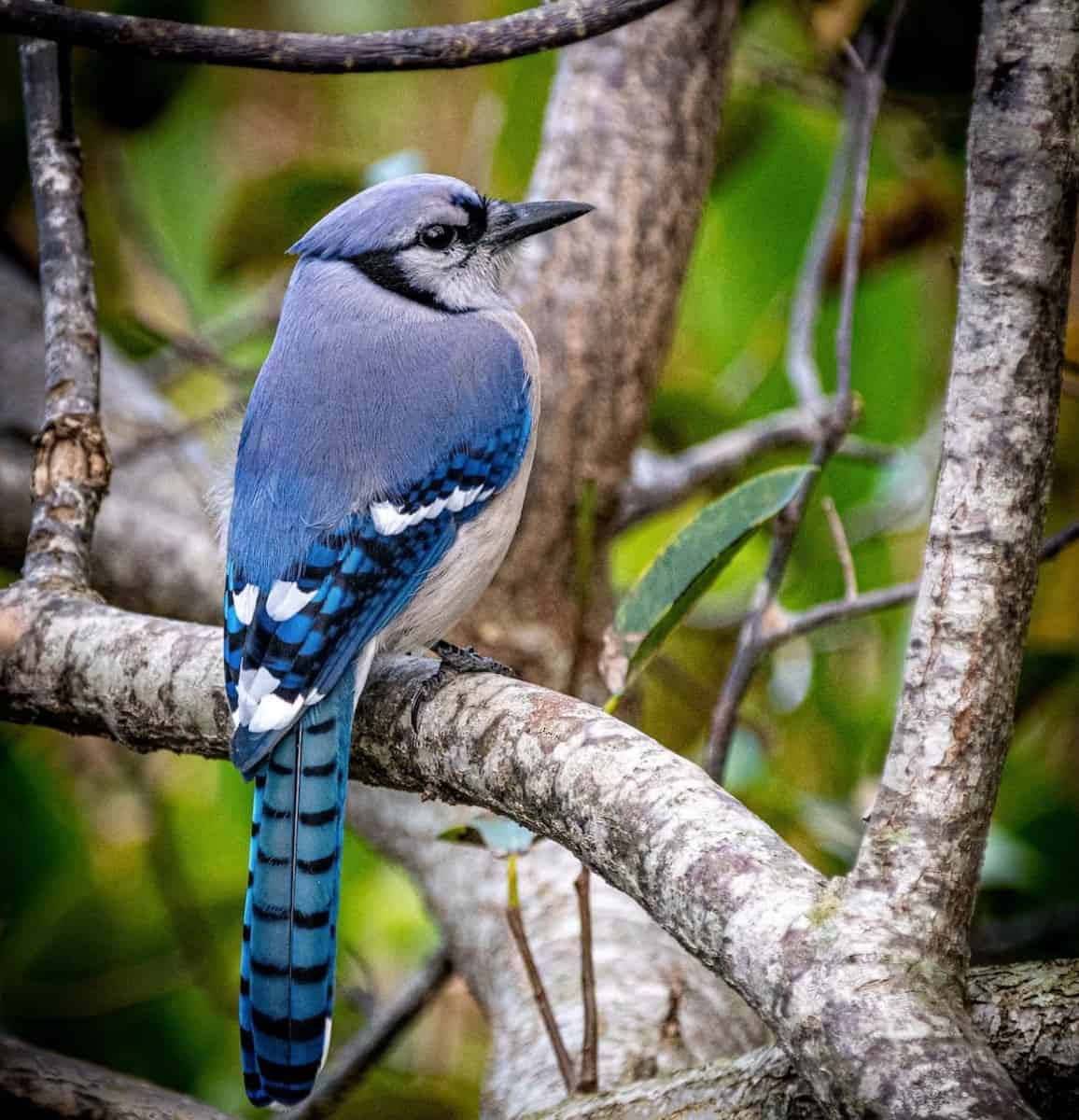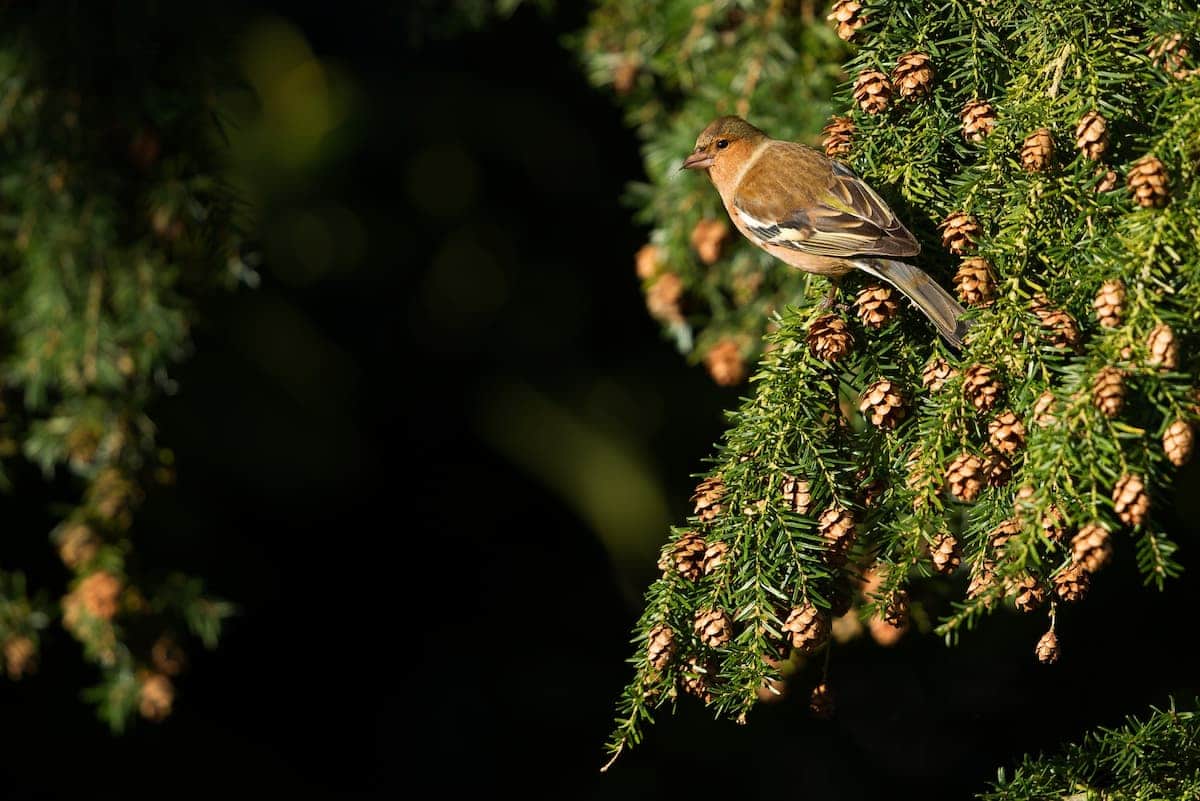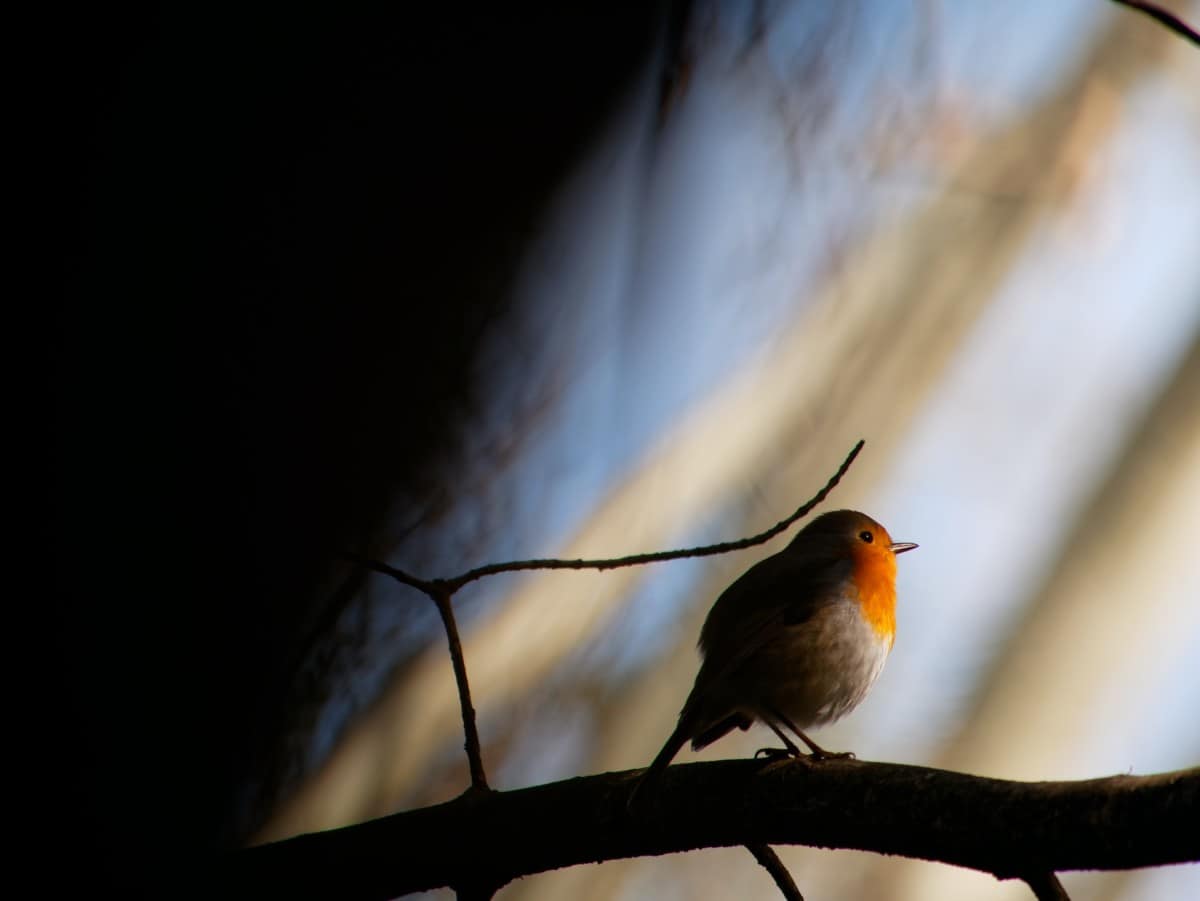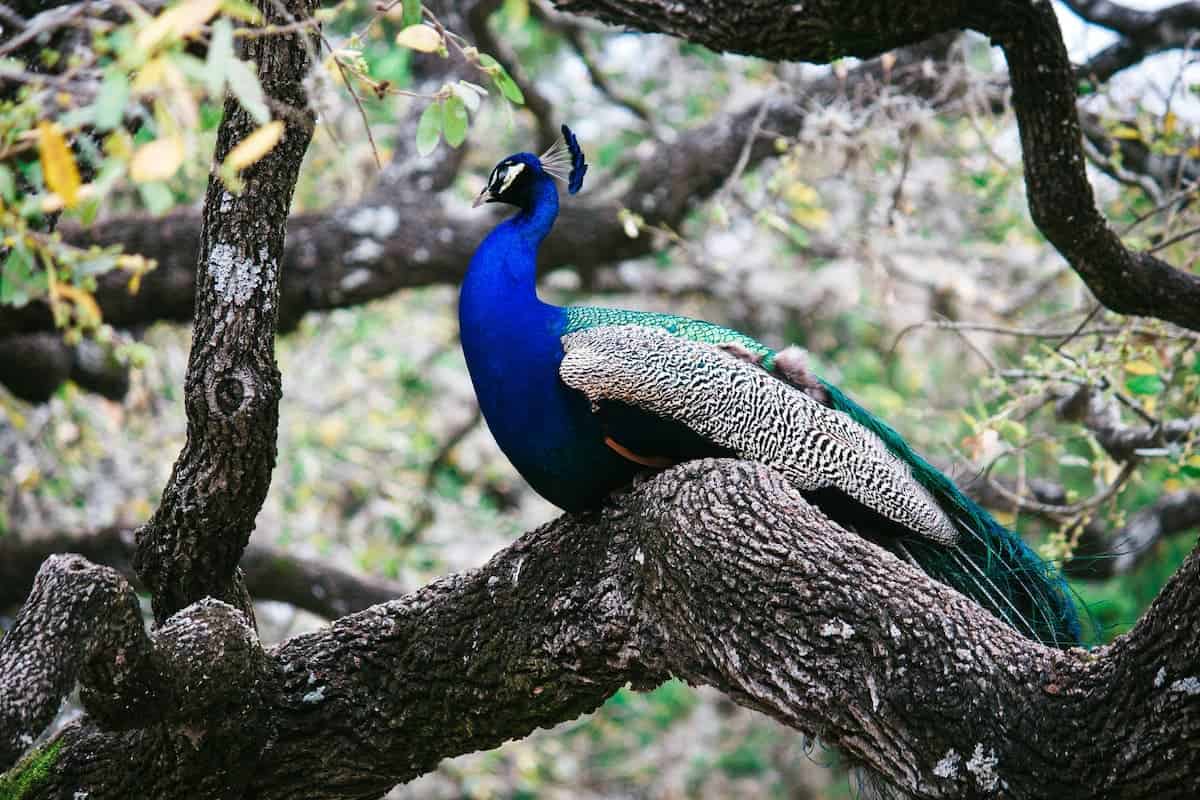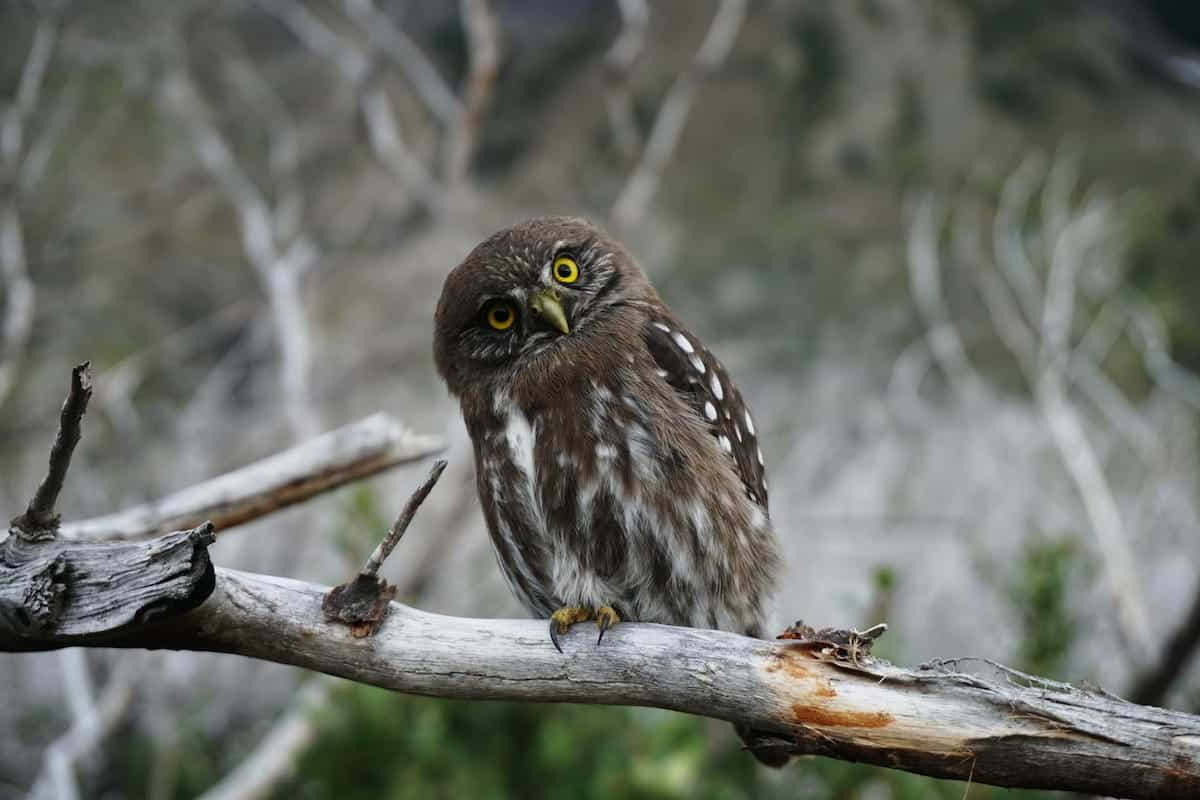Bluebirds are active little specks of happiness dotted over the landscape. These little birds are constantly active during daylight hours, searching for food, bathing, and darting about. Their striking blue-colored feathers make them easy to identify, and spotting a flock of bluebirds is an omen of hope and happiness, even in challenging times. But have you ever wondered where bluebirds go at night and where they sleep?
In warm weather, bluebirds sleep in high trees, dense foliage, or cavities where they will be safe from predators. During cold periods and bad weather, they find enclosed spaces like holes in trees or birdhouses where they often huddle together in groups to shelter and sleep.
The sleeping places of these iconic little birds change through the various seasons and age phases of their lives. Like humans, bluebirds are active during the day and sleep at night, but how do they stay perched on branches if they are sound asleep? Do they ever fall out?
Where Do Bluebirds Sleep?
All bluebirds are not the same. There are three different species of bluebirds, namely the Eastern bluebird, Mountain bluebird, and Western bluebird. But while they differ in appearance, they do all share the same behaviors and sleeping habits.
Bluebirds prefer to live in quiet open areas like parks, pastures, orchards, and meadows, so they find safe sleeping spots within these areas. During the summer and spring nesting seasons, the male actively assists with feeding and caring for the chicks, so he stays in the general vicinity of the sheltered nest at night but does not sleep inside the nest while the female is brooding.
Bluebirds change their sleeping spots according to their life phases and the season. During the warm spring and summer months, bluebirds sleep on high, protected branches, tree niches, or any other sheltered spot that they can find to hide out of the view of predators.
Where Do Bluebirds Sleep When They Are Chicks?
When they emerge as helpless chicks from gorgeous blue eggs, baby bluebirds sleep snuggly under their mother inside a sheltered nest.
Bluebirds are cavity nesters and seek out snug places sheltered from weather and predators. They use holes in trees or nesting boxes when they are available. Nests are small cup-like structures lined with soft materials like feathers, grass, and hairs to make it the perfect warm environment for chicks to hatch, and that is where they will sleep for the first 2 – 3 weeks of their life.
Where Do Bluebirds Sleep When They Are Fledglings?
When bluebird chicks are between 16 and 22 days old, they fledge. They leave the protection of the sheltered cavity nest and move into the world on their own. The juvenile birds are initially not yet able to fly and forage for themselves. Their parents continue to bring their food to them for the next few weeks until they can fend for themselves, but they do not sleep with them once they have left the nest.
During this time, tiny bluebirds cannot fly well enough to perch safely in the treetops like their parents to sleep. They are also not capable of returning to their nest at night. They can’t stay on the ground, or they would be quick prey for hungry predators. Young bluebirds find sheltered thickets where they can hop from branch to branch and then huddle together with their siblings on a branch to sleep at night. During the night, their main aim is to remain safe and hidden while they sleep.
Do Young Bluebirds Ever Fall Off Branches While They Are Asleep?
The reason you have never seen a sleeping bluebird dropping off a branch is that they have specially designed feet. All types of perching birds, called passerines, sleep with their feet clamped tightly onto their perches.
When a bluebird hunkers down for the night to sleep in a tree, their tiny feet wrap around the branch and are kept warm by their fluffy feathers. A special muscle in the legs locks the bird’s feet onto the branch when it isn’t standing upright. To release the tight grip, they need to stand upright.
Where Do Bluebirds Sleep When They Are Adults?
Bluebirds sleep in secure, sheltered spaces like dense trees and cavities where they can hide. They sleep in enclosed little hides like woodpecker holes or inside hollowed-out tree branches. Bluebird roosting boxes have become popular additions to many
During the warmer brooding months, bluebirds are fiercely territorial about nesting areas and will not share nesting boxes for community sleeping. However, they become more practical during winter, and to escape the cold, several bluebirds will often share the same sheltered tree cavity or roosting box to sleep. If sufficient food and shelter are available, bluebirds can stay in cold areas throughout winter and don’t always migrate to the warmer south.
Bluebirds pile into secure and warm roosting boxes during the winter months. These sensible little birds bunch together to sleep at night during icy weather. This behavior has been well captured here in this YouTube video clip taken in Minnesota during winter:
Do Female Bluebirds Sleep in Their Nests?
The incubation period of bluebird eggs is between 13 and 20 days. The length of incubation is affected by temperature and how much food is provided to the female while brooding. While a female bluebird is actively incubating a clutch of eggs, she sleeps while sitting on the nest. She will only start incubating the eggs after she has finished laying, which can take several days.
When the chicks hatch, the female bluebird will continue to sleep on her chicks until they fledge. As soon as they have moved out of the nest, the female stops sleeping in a nest and will immediately resume her previous adult bluebird sleeping behavior of perching in a sheltered crevice or huddling with a group in a roost.
Will Bluebirds Sleep In Roosting Boxes?
Bluebirds love using sheltered roosting boxes to sleep, and adding one or more to your property is an excellent way to encourage these lovely birds to stay in the area all year.
Conclusion
Bluebirds sleep in cavities like holes created by woodpeckers and hollowed-out branches, especially during cold weather. In warmer months, they can also sleep firmly perching on a branch in a secure place. Bluebirds will readily use sheltered roosting boxes in areas and may even stay in an area during winter if they have sufficient food and shelter available
